Understanding the context and philosophy of Indian citizenship, the situation in countries around the world, and why the implications of the Citizenship Amendment Act may extend to other realms as well
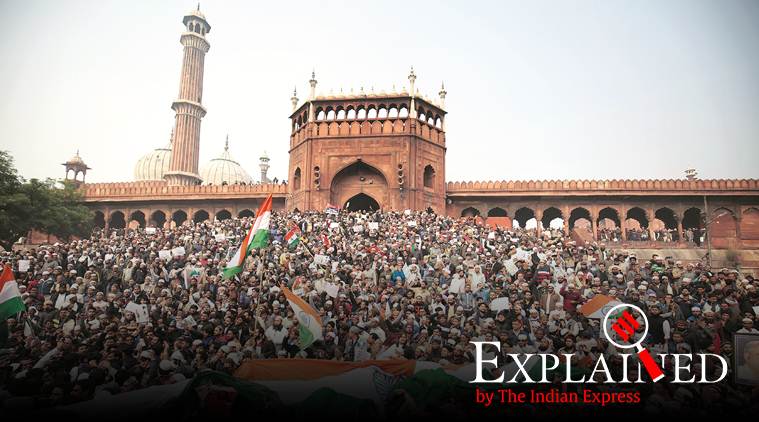
Large crowds have been protesting against the Citizenship Amendment Act in cities across the country. (Express Photo by Praveen Khanna)
What were the Indian ideas and rules of citizenship in the Constitution before the Citizenship Amendment Act (CAA), 2019?
The Constituent Assembly held the principle of jus soli (citizenship based on birth on the soil of a country) to be the more “enlightened modern civilised” principle, as compared to the “racial” principle of jus sanguinis (citizenship based on descent); although citizenship by descent, as well as registration and naturalisation, also found recognition in The Citizenship Act of 1955.
The law on Indian citizenship is located within a constitutional framework that confers equal rights on all citizens, and does not discriminate between them on grounds of caste, creed, tribe or gender.
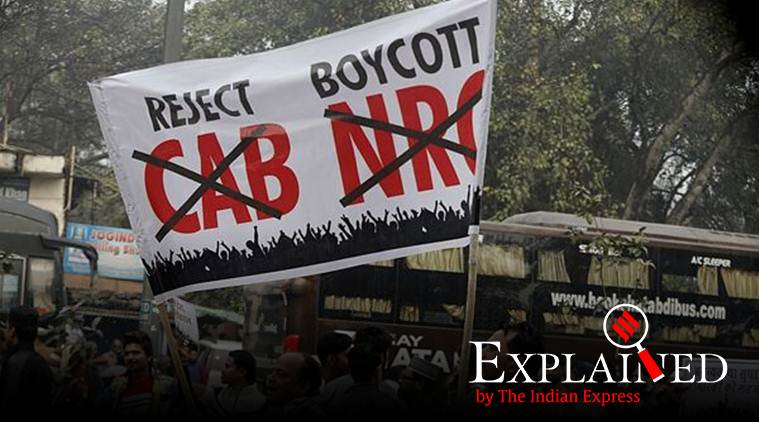 A demonstration against the CAA and NRC near the Red Fort on December 19. Amit Mehra
A demonstration against the CAA and NRC near the Red Fort on December 19. Amit Mehra
But if the new citizenship law does not impact Indian Muslims, should the exclusion of Muslims from Pakistan, Bangladesh, and Afghanistan bother Indians?
It is true that the CAA per se does not impact Indian Muslims. When twinned with the National Register of Citizens (NRC), however, it could adversely impact not only Indian Muslims, but also poor Indians of all faiths.
Even if (given the conflicting signals from the government) the NRC is not implemented, and the differentiation is only in relation to illegal migrants in the CAA, the very introduction of the principle of religious discrimination is cause for concern. Once the principle is admitted, that discrimination on religious grounds is permissible in law, it may not be possible to limit or contain its application to other realms as well.
How has the switch to jus sanguinis been significant in the great citizenship debates of the world?
The direction of change varies. When Donald Trump became President of the United States, he did indeed signal a questioning of the idea of birthright citizenship. On the other hand, Germany has moved in a more inclusive direction, combining elements of both jus soli as well as jus sanguinis. So there are historical fluctuations and hybridisations.
The Indian law of citizenship recognizes both — but through an amendment enacted when Atal Bihari Vajpayee was Prime Minister, jus soli was undermined in favour of jus sanguinis, through the exclusion of people born in India, but with one parent who was an illegal migrant at the time of their birth.
The new amendment consolidates this shift, introducing an explicitly religious criterion into a hitherto religion-neutral law.
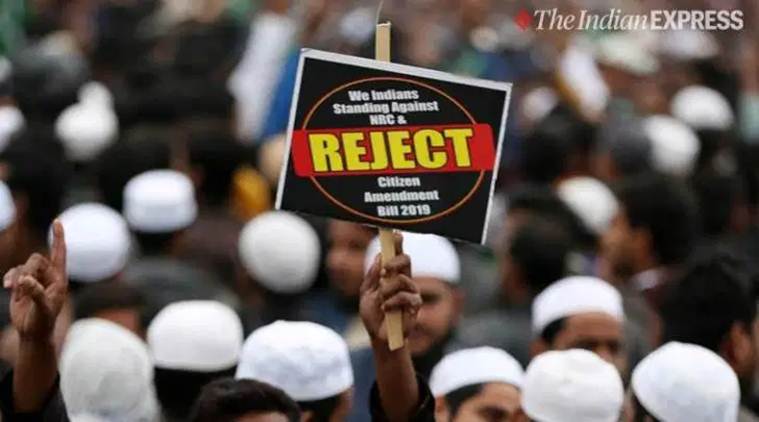 AIMIM members hold a protest against CAB at the clock tower in Lucknow (Express photo by Vishal Srivastav/File)
AIMIM members hold a protest against CAB at the clock tower in Lucknow (Express photo by Vishal Srivastav/File)
Did the collapse of countries such as the USSR and Yugoslavia feed the idea of ethnicity/race and nudge India towards an exclusive idea of citizenship?
The disintegration of the Soviet Union and the break-up of Yugoslavia were a long time ago.
The hyper-nationalism and xenophobia in countries experiencing populist regimes have been attributed to the perceived excesses of globalisation. But the fact is that we have been in what is called a post-multicultural world since at least the mid-1990s.
The impetus for the decline of multiculturalism in Europe had different sources. From left to right, it ranged from the broadly left dissatisfaction with identity politics as a distraction from the project of equality to the concern that it had failed to improve the condition of minorities to the populist worry that being over-solicitous of minority cultures was threatening the majority’s way of life.
The Indian case is, however, distinct from all of these. The great civilisational diversity of this country makes imperative an inclusive architecture of governance.
This found powerful expression in the freedom movement, in the deliberations of the Constituent Assembly, and in our Constitution. Even if the word ‘secular’ was a later addition, India’s Constitution is a document that builds the imperatives of diversity and pluralism into the architectural design of how we are governed, from reservations for historically disadvantaged groups to cultural rights for religious minorities and even the federal arrangement initially based on language.
The questioning of this architecture has less to do with the outside world and more to do with our own polity.
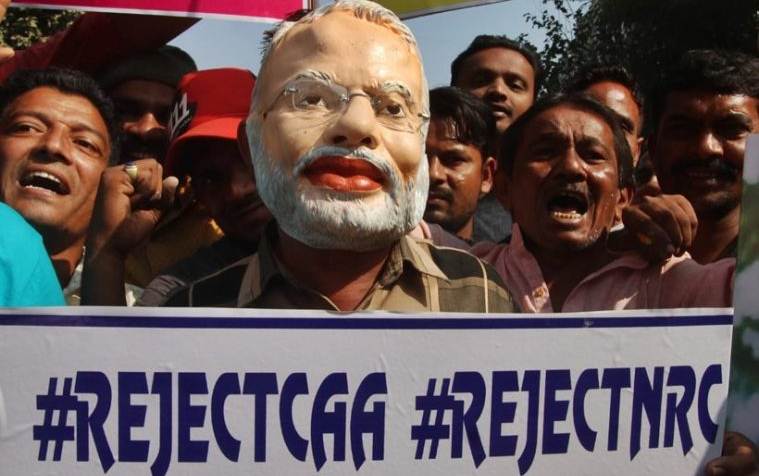 Opposition leaders have accused the ruling BJP of trying appease the Bengali Hindu vote-bank by passing CAA and raising the pitch on a nationwide NRC
Opposition leaders have accused the ruling BJP of trying appease the Bengali Hindu vote-bank by passing CAA and raising the pitch on a nationwide NRC
What other examples are there in the world of countries asking all citizens to prove citizenship at government windows, in the way that some fear the NRC might do? Does that not mean assuming everyone is illegal unless proven otherwise?
I am not aware of any example in the world in which an entire population has been asked to prove its citizenship.
Even national ID cards have been controversial. In 2006, the United Kingdom legislated National ID cards, to be linked to a National Identity Register, carrying 50 categories of information on every citizen. Among the significant objections were concerns about discrimination expressed by black and South Asian citizens. Significantly, the Commission for Racial Equality said that this could result in a two-tiered racial structure, in which British ethnic minorities may be obliged (by the state or by employers) to register while white British people may not. The Act was repealed in 2011, and the data on the National Identity Register was destroyed within a month.
Based on the experience in Assam, how much might a nationwide NRC exercise cost?
The cost of the Assam NRC was Rs 1,600 crore, and 50,000 officials were deployed to enrol 3.3 million applicants. We now know that it ended up excluding 1.9 million people, mostly genuine citizens of all religious affiliations. If we take this as the basis of a back-of-the-envelope calculation, counting only the Indian electorate of 879 million voters, an all-India NRC would entail an expenditure of Rs 4.26 lakh crore, and would require 1.33 crore officials to conduct it.
Can the NRC be “done again”, as is being said in Assam’s case? How does a repeat of the exercise impact the credibility of the state?
The huge margin of error — especially exclusion errors — obviously dents seriously the credibility of such an exercise.
But there can also be errors of inclusion. As Kamal Sadiq’s book Paper Citizens: How Illegal Immigrants Acquire Citizenship in Developing Countries showed, there is a greater likelihood of poor illegal migrants holding proper documents than of poor nationals. Migrants, because that’s the condition for their survival, have to organise papers on arrival, through what Sadiq calls “networks of kinship” and “networks of profit”. This is what he describes as “documentary citizenship”.
Essentially, it means that documented non-nationals (illegal migrants) may be able to prove their citizenship even as undocumented nationals are unable to do so. The dangers of stripping legitimate citizens of their citizenship should surely outweigh any advantage of ‘detecting’ illegal foreigners.
Credibility is also called into question when the authenticity of documents issued by the state is impugned. The courts have been known to cast doubts on the legitimacy of the citizenship of Indian passport holders, on the grounds that a passport could have been acquired by misrepresentation and fraud.
Prof Niraja Gopal Jayal is one of India’s most well-known political scientists, with extensive work on the question of citizenship. She is the author of Citizenship and its Discontents: An Indian History. She spoke to Seema Chishti.
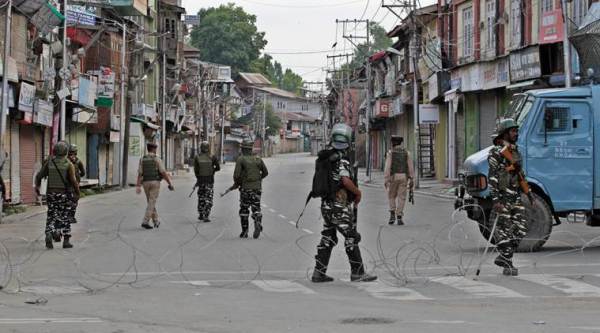























































 A demonstration against the CAA and
A demonstration against the CAA and  AIMIM members hold a protest against CAB at the clock tower in Lucknow (Express photo by Vishal Srivastav/File)
AIMIM members hold a protest against CAB at the clock tower in Lucknow (Express photo by Vishal Srivastav/File) Opposition leaders have accused the ruling
Opposition leaders have accused the ruling 

 पाकिस्तान के प्रधानमंत्री इमरान खान ने शनिवार को आशंका जताई कि भारत घरेलू परिस्थितियों से ध्यान भटकाने के लिए उसके खिलाफ ‘छद्म कार्रवाई’ कर सकता है और साथ ही चेतावनी दी कि पाकिस्तान ऐसी किसी भी कार्रवाई का मुंहतोड़ जवाब देगा। खान ने कई ट्वीट कर कहा कि मोदी सरकार में भारत ‘फासीवादी विचारधारा’ के साथ ‘हिंदू राष्ट्र’ की ओर से बढ़ रहा है। उन्होंने भारत में संशोधित नागरिकता कानून के खिलाफ हो रहे प्रदर्शन की पृष्ठभूमि में कहा, ‘वे सभी भारतीय जो बहुलवादी भारत चाहते हैं, वे संशोधित नागरिकता कानून के खिलाफ प्रदर्शन कर रहे हैं और यह अब जन आंदोलन बनता जा रहा है।’ खान ने कहा कि भारत में जिस तरह से विरोध प्रदर्शन बढ़ रहा है, उससे ‘पाकिस्तान पर खतरा भी बढ़ रहा है और भारतीय सेनाध्यक्ष जनरल बिपिन रावत की नियंत्रण रेखा पर हालात को लेकर की गई टिप्पणी से ‘छद्म कार्रवाई को लेकर पाकिस्तान की चिंता भी बढ़ गई है।’
पाकिस्तान के प्रधानमंत्री इमरान खान ने शनिवार को आशंका जताई कि भारत घरेलू परिस्थितियों से ध्यान भटकाने के लिए उसके खिलाफ ‘छद्म कार्रवाई’ कर सकता है और साथ ही चेतावनी दी कि पाकिस्तान ऐसी किसी भी कार्रवाई का मुंहतोड़ जवाब देगा। खान ने कई ट्वीट कर कहा कि मोदी सरकार में भारत ‘फासीवादी विचारधारा’ के साथ ‘हिंदू राष्ट्र’ की ओर से बढ़ रहा है। उन्होंने भारत में संशोधित नागरिकता कानून के खिलाफ हो रहे प्रदर्शन की पृष्ठभूमि में कहा, ‘वे सभी भारतीय जो बहुलवादी भारत चाहते हैं, वे संशोधित नागरिकता कानून के खिलाफ प्रदर्शन कर रहे हैं और यह अब जन आंदोलन बनता जा रहा है।’ खान ने कहा कि भारत में जिस तरह से विरोध प्रदर्शन बढ़ रहा है, उससे ‘पाकिस्तान पर खतरा भी बढ़ रहा है और भारतीय सेनाध्यक्ष जनरल बिपिन रावत की नियंत्रण रेखा पर हालात को लेकर की गई टिप्पणी से ‘छद्म कार्रवाई को लेकर पाकिस्तान की चिंता भी बढ़ गई है।’




 नये थल सेना प्रमुख नामित किए गए लेफ्टिनेंट जनरल मनोज नरवाने ने यहां शनिवार को कहा कि कोई भी सैन्य अभियान खुफिया एजेंसियों के सहयोग के बगैर सफल नहीं हो सकता। लेफ्टिनेंट जनरल नरवाने ने यहां एक पुस्तक विमोचन कार्यक्रम में कहा, ‘सैन्य अभियान और खुफिया सूचनाओं का आपस में करीबी संबंध है। जब कभी हमें संचालन ब्रीफिंग की जरूरत होती है, तब यह हमेशा ही ‘खबर दुश्मन के बारे में’ के साथ शुरू होता है और ‘खबर’ वह होती है जो हम अपनी खुफिया एजेंसियों से प्राप्त करते हैं।’ उन्होंने कहा, ‘मैं यह दावे के साथ कह सकता हूं कि हमारा कोई भी सैन्य अभियान तब तक सफल नहीं हो सकता, जब तक कि इसे ‘रॉ’ सहित विभिन्न खुफिया एजेंसियों से सहायता नहीं प्राप्त होती है।’
नये थल सेना प्रमुख नामित किए गए लेफ्टिनेंट जनरल मनोज नरवाने ने यहां शनिवार को कहा कि कोई भी सैन्य अभियान खुफिया एजेंसियों के सहयोग के बगैर सफल नहीं हो सकता। लेफ्टिनेंट जनरल नरवाने ने यहां एक पुस्तक विमोचन कार्यक्रम में कहा, ‘सैन्य अभियान और खुफिया सूचनाओं का आपस में करीबी संबंध है। जब कभी हमें संचालन ब्रीफिंग की जरूरत होती है, तब यह हमेशा ही ‘खबर दुश्मन के बारे में’ के साथ शुरू होता है और ‘खबर’ वह होती है जो हम अपनी खुफिया एजेंसियों से प्राप्त करते हैं।’ उन्होंने कहा, ‘मैं यह दावे के साथ कह सकता हूं कि हमारा कोई भी सैन्य अभियान तब तक सफल नहीं हो सकता, जब तक कि इसे ‘रॉ’ सहित विभिन्न खुफिया एजेंसियों से सहायता नहीं प्राप्त होती है।’
























































